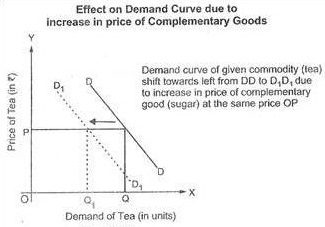- Business Concepts ›
- Marketing and Strategy ›
- Complementary Demand
Complementary Demand
Definition & Meaning
This article covers meaning & overview of Complementary Demand from marketing perspective.
What is meant by Complementary Demand?
The demand generated for a product as a result of demand for a related but different product, e.g., computers and software, vehicles and tyres, etc. This is also known as joint demand.
Thus, complementary goods are the exact opposite of substitute goods and they show negative cross-elasticity with respect to each other. When the price of one good falls, the demand of its complement increases. Thus, the demands of the two complements are linked to each other- the rise in demand of one leads to increase in demand of the other and vice-versa. Similar is the case with their prices. However, with substitute goods, the price and demand of one is inversely linked to the prices and demand of the other. Greater the price of one, lesser will be the price of the other.

The graph shows the effect on the demand of tea when the price of its complementary good (sugar) increases. Other examples of complementary products would be: printers and printer cartridges, DVD and DVD players, peanut butter and jelly.
A perfect complement is one that has to be consumed with another product. The indifference curves of such products will be at right angles to each other, e.g., left shoes and right shoes.
Complementary goods give the companies additional marketing power. As customers have nowhere else to go, it allows vendor lock-in because of the high switching costs. Some pricing strategies popular for complementary goods are:
i) Pricing the base good at relatively lower price to the complementary good, allowing easy entry for the consumers, e.g., printers and jet cartridges
ii) Pricing the base good at relatively higher price to the complementary good, allowing barriers to entry for the consumers, e.g., the entry fees to a theme park and the fees for individual rides inside the park.
Hence, this concludes the definition of Complementary Demand along with its overview.
This article has been researched & authored by the Business Concepts Team which comprises of MBA students, management professionals, and industry experts. It has been reviewed & published by the MBA Skool Team. The content on MBA Skool has been created for educational & academic purpose only.
Browse the definition and meaning of more similar terms. The Management Dictionary covers over 1800 business concepts from 5 categories.
Continue Reading:
What is MBA Skool?About Us
MBA Skool is a Knowledge Resource for Management Students, Aspirants & Professionals.
Business Courses
Quizzes & Skills
Quizzes test your expertise in business and Skill tests evaluate your management traits
Related Content
All Business Sections
Write for Us